Eye Candy (27)
By:
March 24, 2020
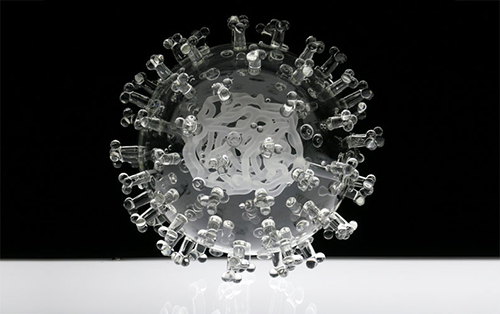
Eye Candy has had its eye on Bristol-based sculpture and installation artist Luke Jerram for quite some time. And during our current #VirusSpring, it is only right to feature his incredible series of glass microbes here.
These sculptures are a biologically-accurate representation of the tiny entities, blown up from between 200,000 to several million times in size, and are created via a process of scientific glassblowing. Jerram works with virologists from the University of Bristol, and glassblowers Kim George, Brian Jones and Norman Veitch, to create each work.
Jerram began this series in 2004. The most recent glass microbe, none other than COVID-19, was actually commissioned approximately 8 weeks before the current outbreak; all money from it is going to Médecins Sans Frontières (MSF) to assist developing countries with the pandemic.
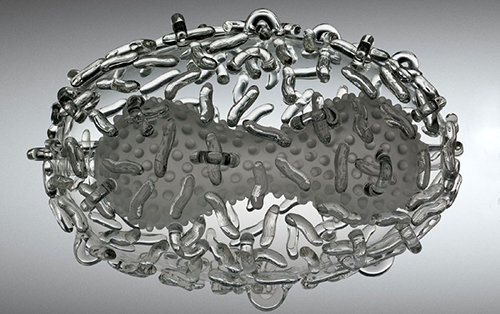
Viruses are repositories for both our fascination and our dread: dread for the damage they do us, yet fascination with their weird relationship to life and death. Neither technically alive nor inert, they are seen to activate and mobilize only in, and literally within, a host, destroying the invaded cell by repurposing it to make copies of themselves, in the most basic of biological imperatives. And yet, they cannot function independently. The existence of viruses, as differentiated from other tiny microbes such as bacteria, wasn’t even suspected until the late 19th century, and they were not seen until the the invention of the electron microscope in 1931, as they are smaller than the wavelength of light. But once we could see them, we became fascinated anew with their almost architectural purity of form.
From the project website:
Glass Microbiology is a body of glass work which has been developed by artist Luke Jerram since 2004. Made to contemplate the global impact of each disease, the artworks are created as alternative representations of viruses to the artificially coloured imagery received through the media. In fact, viruses have no colour as they are smaller than the wavelength of light. By extracting the colour from the imagery and creating jewel-like beautiful sculptures in glass, a complex tension has arisen between the artworks’ beauty and what they represent.
As there can be beauty in danger, there can be beauty at scales other than our own. By translating these microbes into our scale, we are invited to both appreciate their form, and to think differently about what it means to inhabit a world that contains both us, and them.
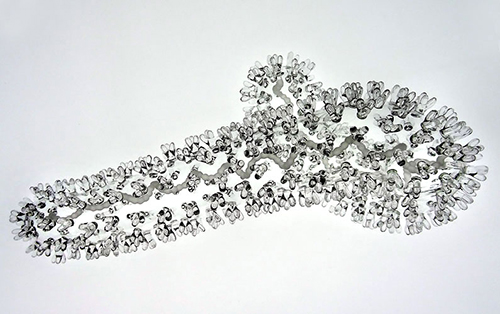
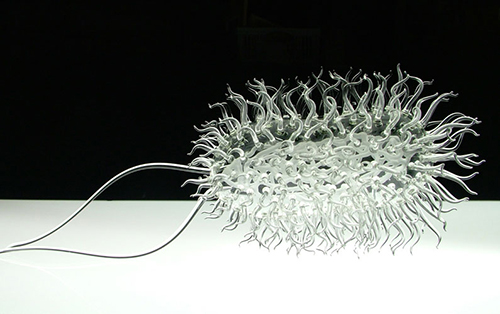
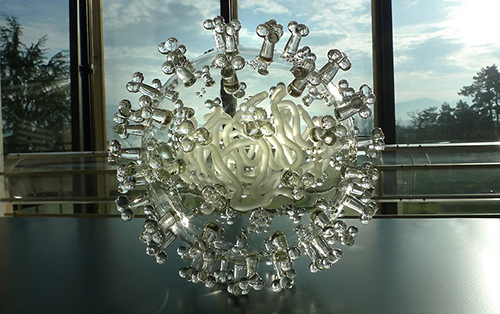
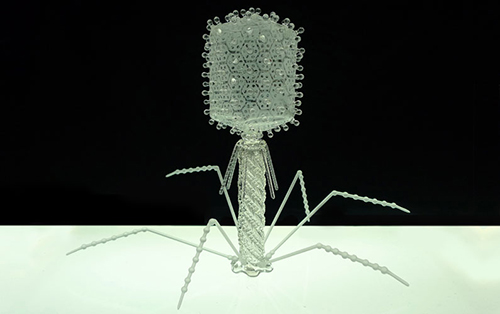
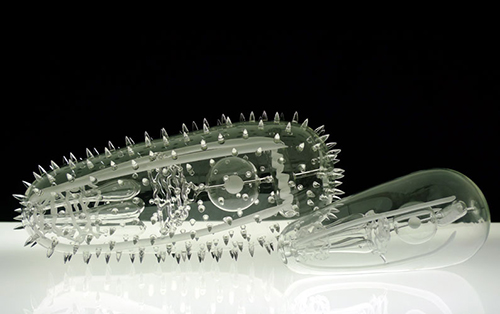
Luke Jerram: Glass Microbiology; website
